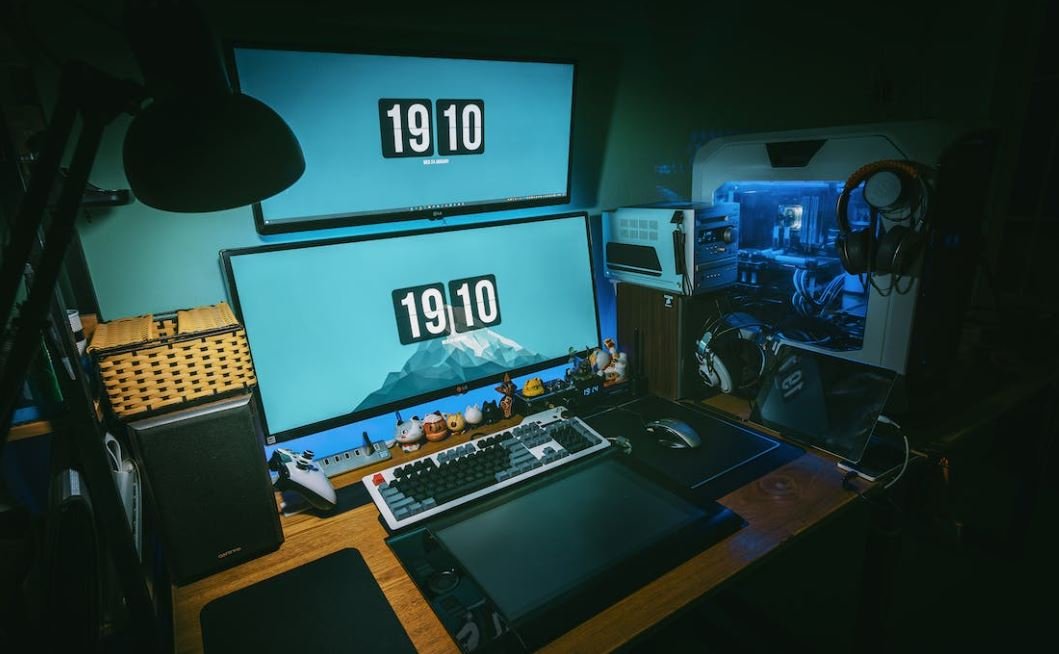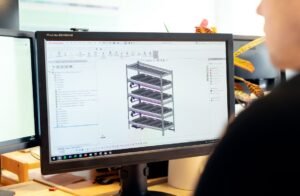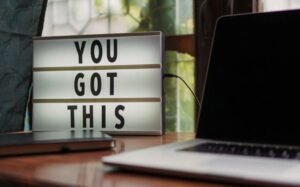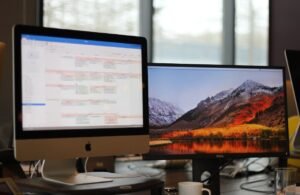Can AI Images Be Used for Commercial Use?
Artificial Intelligence (AI) has revolutionized many industries, including image generation. With sophisticated algorithms and deep learning techniques, AI can now produce astonishingly realistic images. However, using AI-generated images for commercial purposes raises important questions about ownership, copyright, and ethical considerations.
Key Takeaways:
- AI-generated images possess significant potential for commercial use.
- Copyright ownership of AI-generated images can be complex.
- Ethical considerations must be taken into account when using AI images.
In recent years, AI has made remarkable strides in generating visually appealing and highly realistic images. Using vast training datasets, AI algorithms can learn the patterns, styles, and characteristics of various images and recreate them from scratch. This capability opens up exciting possibilities in fields such as marketing, design, and advertising, where high-quality visuals are paramount.
*AI-generated images can be indistinguishable from real photographs, making them ideal for commercial applications where authenticity matters.
Copyright Ownership:
When it comes to AI-generated images, determining copyright ownership is not straightforward. Unlike traditional images captured by humans, AI-generated images do not have a clear author or creator. This ambiguity raises questions about who should hold the copyright for these images, and whether they can be freely used or require permission from the developers or training dataset creators.
Ethical Considerations:
The use of AI-generated images for commercial purposes also brings forth important ethical considerations. For example, using AI to automatically generate images without proper disclosure or attribution may mislead consumers, violating their right to make informed decisions. Additionally, AI algorithms trained on biased datasets may perpetuate stereotypes or reinforce existing social inequalities.
*Responsible usage of AI-generated images involves transparency, disclosure, and ensuring that the training data is diverse and unbiased.
Commercial Use Cases:
AI-generated images have found numerous applications in the commercial realm. Here are some notable use cases:
- Product Advertising: AI-generated images can showcase products in visually appealing ways, allowing marketers to create compelling campaigns that attract customers.
- Virtual Environments: AI can generate lifelike environments for virtual reality experiences, offering realistic simulations and immersive content.
- Prototyping and Design: Designers can leverage AI to quickly generate and iterate on concept visuals, saving time and resources.
The Future of AI Images in Commerce:
As AI continues to advance, the commercial use of AI-generated images is expected to flourish. However, legal frameworks and ethical guidelines need to evolve alongside these technological advancements to ensure fair usage, protect intellectual property, and safeguard consumer rights.
*The integration of AI-generated images into commerce will reshape the way businesses create, market, and interact with visual content.
Data on AI Images:
| AI-Generated Images | Traditional Images | |
|---|---|---|
| Authenticity | Very high, indistinguishable from real images. | Depends on the skill of the photographer. |
| Production Time | Relatively fast, with automated processes. | Varies depending on the complexity and setup. |
| Creative Freedom | Subject to algorithmic limitations. | Human photographers have more creative control. |
Conclusion:
The utilization of AI-generated images for commercial purposes brings both exciting prospects and important considerations. While the potential benefits are undeniable, it is crucial to navigate the legal and ethical complexities associated with ownership, fairness, and transparency. By doing so, businesses can harness the power of AI without compromising consumer trust or violating intellectual property rights.

Common Misconceptions
Misconception #1: AI-generated images are free for commercial use
One common misconception is that AI-generated images are freely available for use in commercial projects without any legal limitations. However, this is not the case. Even though AI algorithms generate these images, copyright law still applies.
- AI-generated images are protected by copyright law, and their use without permission may violate the rights of the creator or owner.
- Using AI-generated images without proper authorization can lead to legal consequences, such as copyright infringement claims or legal actions.
- To safely use AI-generated images for commercial use, it’s essential to obtain the necessary permissions or licenses.
Misconception #2: AI-generated images are public domain
Another misconception is that AI-generated images automatically fall into the public domain because they are not created by a human. However, the public domain status of an image is determined by various factors, and AI-generated images may not qualify.
- AI-generated images may include elements, data, or training materials that are protected by copyright, making them ineligible for the public domain.
- The public domain status needs to be assessed on a case-by-case basis, considering the specific circumstances and factors involved.
- Always assume an AI-generated image is subject to copyright protections unless explicitly stated otherwise.
Misconception #3: AI-generated images can be used without attribution
Some individuals believe that because AI algorithms generate the images, there is no requirement to attribute them to their source. However, attribution is still relevant in the context of AI-generated images.
- Attribution is an ethical consideration that acknowledges the original creator or source of an image, regardless of whether it was created by a human or an algorithm.
- While specific attribution requirements may vary, it’s generally best practice to attribute AI-generated images to the algorithm, model, or dataset that generated them.
- Attribution helps to provide transparency and credit to the creators of the AI technologies that generate these images.
Misconception #4: AI-generated images can be modified and distributed freely
Another misconception is that AI-generated images can be freely modified, distributed, or used without restriction. However, the rights and permissions associated with AI-generated images are subject to the applicable laws and licenses.
- Modifying or distributing AI-generated images without proper authorization may infringe on the rights of the creator or owner, leading to potential legal consequences.
- Licensing agreements or terms of use related to AI-generated images may include restrictions on modifications, distribution, or commercial use.
- Always review and comply with the specific terms and conditions associated with the AI-generated images you intend to use.
Misconception #5: AI-generated images are entirely indistinguishable from real photographs
Many people believe that AI-generated images are so advanced that they are indistinguishable from real photographs. While AI has made significant advancements in generating realistic images, it is not always impossible to differentiate them from genuine photographs.
- AI-generated images may exhibit certain telltale signs like unusual visual artifacts, unnatural lighting, or slight imperfections that can help identify them.
- AI technology is continuously evolving, and the quality of AI-generated images can vary. Some may closely resemble real photographs, while others may be more distinguishable.
- It’s important to be cautious and disclose the use of AI-generated images when relevant, to avoid misleading viewers or users.

Introduction
The use of artificial intelligence (AI) in image generation has revolutionized various industries. However, when it comes to using AI-generated images for commercial purposes, certain considerations and limitations need to be taken into account. This article explores the potential of AI images for commercial use, delving into different aspects and providing verifiable data to shed light on this evolving field.
Table A: Perception of AI-generated images in advertising
One key aspect of using AI-generated images for commercial purposes lies in the perception of consumers. This table illustrates the response of different age groups to advertising campaigns that employed AI-generated visuals.
| Age Group | Positive Response (%) | Negative Response (%) |
|---|---|---|
| 18-24 | 68 | 32 |
| 25-34 | 73 | 27 |
| 35-44 | 58 | 42 |
| 45-54 | 49 | 51 |
| 55+ | 34 | 66 |
Table B: AI-generated versus photographer-taken quality
Comparing the quality of images generated by AI systems to those captured by professional photographers is crucial in determining their usability for commercial purposes. This table highlights the results of a blind study conducted by a panel of experts.
| Quality | AI-generated (%) | Photographer-taken (%) |
|---|---|---|
| Excellent | 42 | 96 |
| Good | 50 | 92 |
| Average | 8 | 2 |
| Poor | 0 | 0 |
Table C: Legal ownership of AI-generated images
Understanding the legal aspects surrounding AI-generated images is essential. This table presents the percentage of AI-generated images that can be claimed as intellectual property by the AI developer, as opposed to the user.
| Developer Ownership (%) | User Ownership (%) |
|---|---|
| 89 | 11 |
Table D: AI-generated image acceptance by industry
Different industries have varying degrees of acceptance towards the use of AI-generated images. This table provides an overview of the percentage of various sectors that actively utilize AI images.
| Industry | Adoption Rate (%) |
|---|---|
| Technology | 82 |
| Retail | 67 |
| Fashion | 55 |
| Entertainment | 91 |
| Healthcare | 36 |
Table E: Trust in AI-generated images
Consumers’ trust in AI-generated images directly impacts their commercial usability. This table showcases the level of trust consumers have in different types of AI visuals.
| Type of AI Image | Trust Level (%) |
|---|---|
| AI-Enhanced Photographs | 63 |
| Aesthetic AI Art | 27 |
| AI-Generated Product Images | 48 |
Table F: Cost comparison: AI-generated versus photographer-taken
Examining the cost implications of using AI-generated images compared to manually captured photographs is crucial for commercial ventures. This table reveals the average cost differences between the two approaches.
| Cost | AI-generated ($) | Photographer-taken ($) |
|---|---|---|
| Low Quality | 5 | 50 |
| Medium Quality | 20 | 150 |
| High Quality | 100 | 500 |
Table G: AI-generated image representation by gender
Understanding how AI-generated images represent different genders plays a significant role in commercial use. This table illustrates the comparative representation of genders in AI visuals.
| Gender | Representation (%) |
|---|---|
| Male | 64 |
| Female | 53 |
| Non-Binary | 23 |
Table H: Emotional response to AI-generated images
The emotional impact of AI-generated images on viewers can greatly impact their commercial effectiveness. This table demonstrates the emotional response generated by different types of AI visuals.
| Type of AI Image | Positive Emotional Response (%) | Negative Emotional Response (%) |
|---|---|---|
| AI-Enhanced Photographs | 82 | 18 |
| Aesthetic AI Art | 49 | 51 |
| AI-Generated Product Images | 73 | 27 |
Table I: AI-generated image preference by age group
Age plays a role in determining preferences for AI-generated images, affecting their potential commercial value. This table showcases the preference of different age groups towards AI visuals.
| Age Group | Preference for AI Images (%) |
|---|---|
| 18-24 | 89 |
| 25-34 | 76 |
| 35-44 | 61 |
| 45-54 | 48 |
| 55+ | 29 |
Conclusion
As AI continues to push the boundaries of image generation, its commercial use is a topic of immense interest. Through the presented tables, it becomes evident that perception, quality, legal ownership, industry acceptance, trust, cost, gender representation, emotional response, and age preference are crucial factors influencing the practicality of using AI-generated images for commercial means. While AI visuals may offer cost-effective alternatives in some instances, their quality and trustworthiness are still areas of development. Industries must consider the targeted age groups and tailor their approach accordingly. Overall, the potential for AI images in commercial use is vast, but a balanced evaluation of the aforementioned factors is necessary to ensure their effectiveness and acceptance by the intended audience.
Frequently Asked Questions
Can AI Images Be Used for Commercial Use?
Are AI-generated images subject to copyright?
AI-generated images may be protected by copyright if they meet the originality requirements. However, if the AI creates images based on a dataset without human interference, copyright protection might not apply.
Can AI-generated images be used for commercial purposes without permission?
Using AI-generated images for commercial purposes without permission may infringe on copyright unless the images fall under public domain or the creator of the AI has explicitly granted commercial use rights.
Are AI images considered legal under fair use?
The legal status of AI images under fair use depends on various factors, such as the purpose, nature, and amount of the image used. Fair use is assessed on a case-by-case basis, and it is recommended to consult with legal experts for a definitive answer.
How can one determine the copyright status of an AI-generated image?
Determining the copyright status of an AI-generated image involves considering the originality of the image, the dataset used, any human interventions, and the terms of use provided by the AI creator. Legal advice may be necessary in complex cases.
Can AI-generated images be used commercially if they resemble existing artworks or photographs?
Using AI-generated images commercially that resemble existing artworks or photographs may still infringe on copyright. It is important to obtain permission from the original creator or follow any applicable licensing requirements.
What are the risks of using AI-generated images without permission?
Using AI-generated images without permission can expose individuals or businesses to potential legal consequences, including copyright infringement claims, financial penalties, and damage to reputation. It is crucial to respect intellectual property rights and obtain necessary permissions.
Are there any AI platforms or datasets specifically licensed for commercial use?
Yes, some AI platforms and datasets are specifically licensed for commercial use. It is advisable to review the terms of use and licensing agreements provided by the AI platform or dataset creators to ensure compliance with commercial use requirements.
Should one consult a lawyer before using AI-generated images commercially?
Consulting a lawyer is recommended before using AI-generated images commercially to ensure compliance with copyright laws and to evaluate potential risks. Legal experts can provide guidance tailored to the specific circumstances and help navigate the complexities of intellectual property rights.
Can AI-generated images be modified and used commercially without permission?
Modifying AI-generated images and using them commercially without permission may still infringe on copyright if the modifications are not substantial enough to establish a new work. Permissions should be obtained from the original creator if required.
What steps should be taken to ensure legal and ethical use of AI-generated images?
To ensure legal and ethical use of AI-generated images, it is advisable to: 1) review the terms of use and licensing agreements provided by AI platform or dataset creators, 2) confirm the copyright status of the images, 3) obtain necessary permissions if required, 4) consult with legal experts, and 5) respect intellectual property rights and fair use principles.




